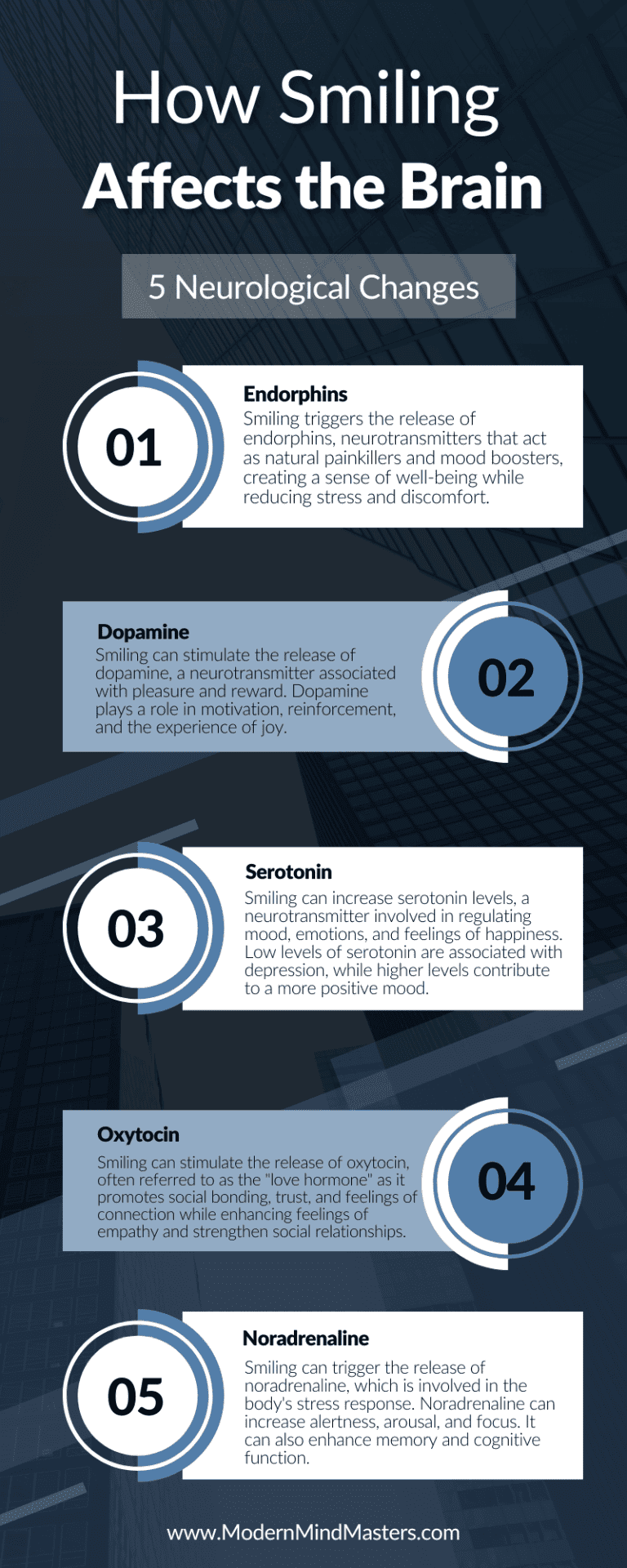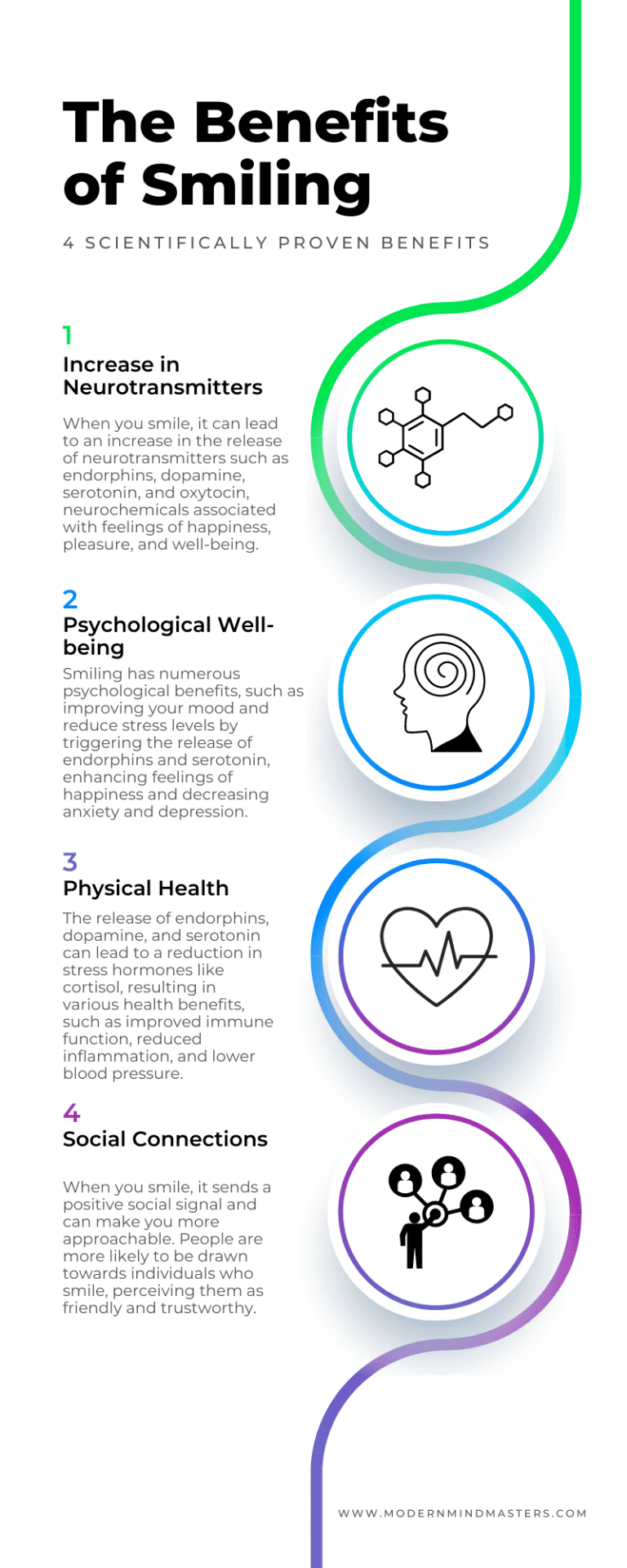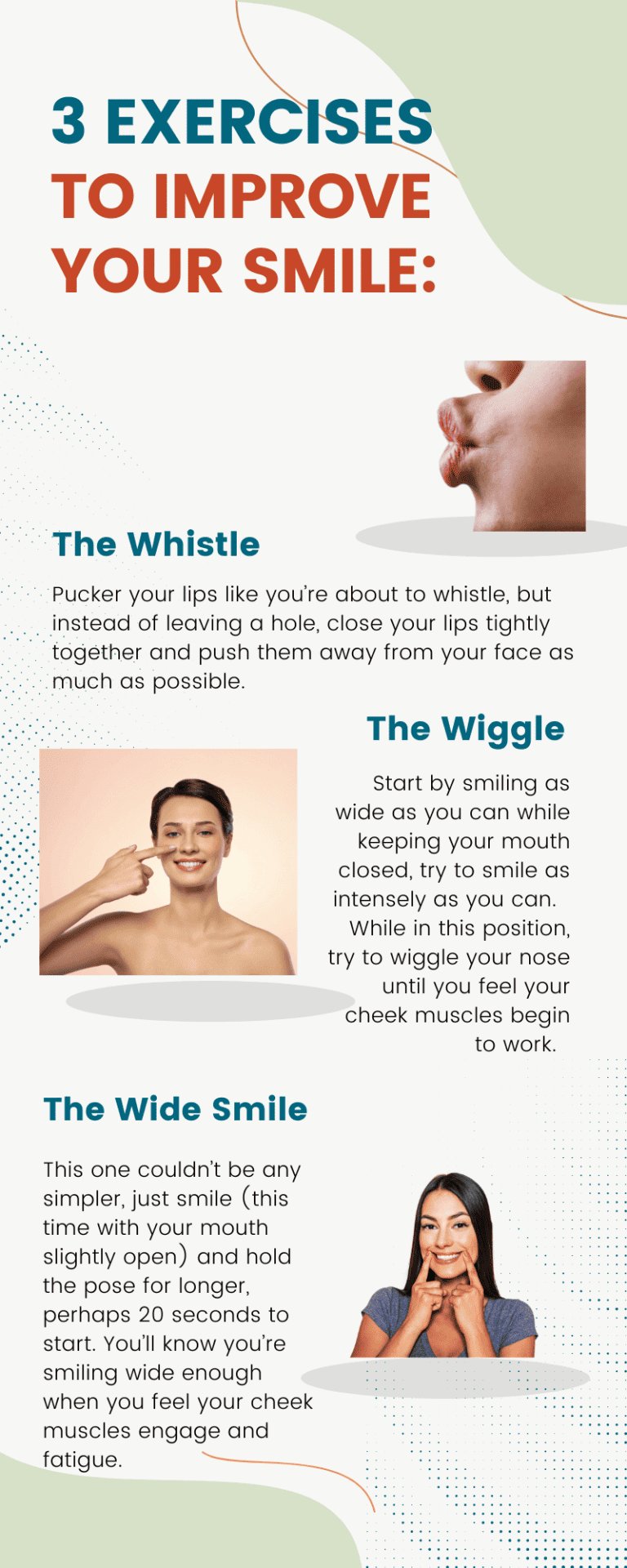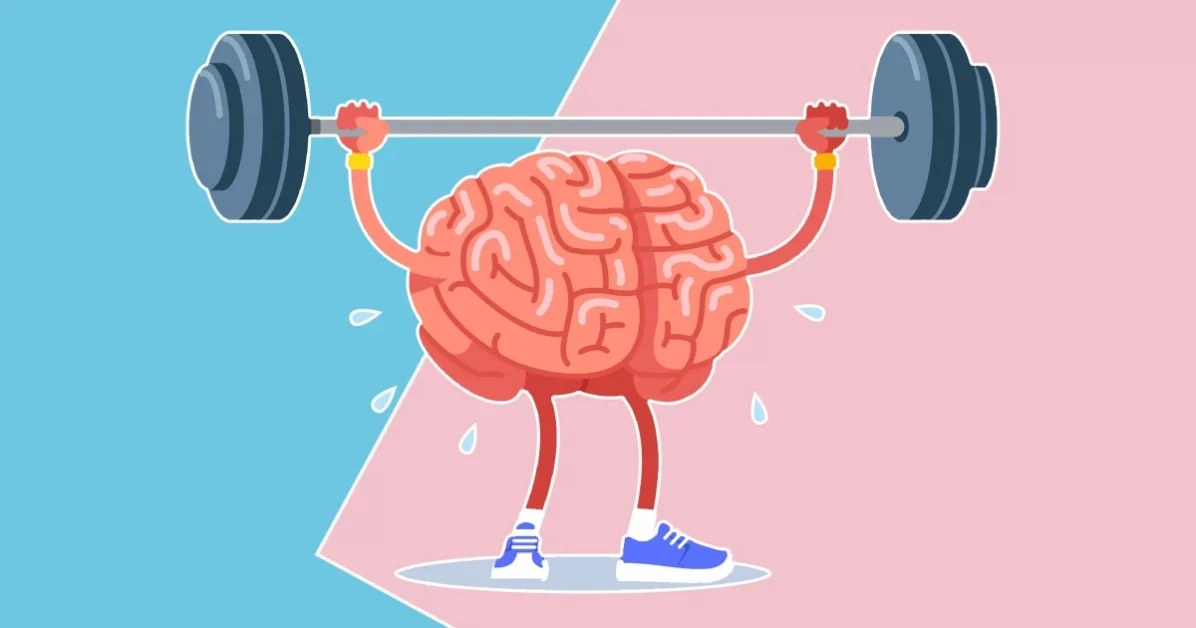
What is Psychedelic Therapy, and Can It Improve Your Mental Health?
Psychedelic therapy is an emerging treatment option for mental health conditions, where psychedelic drugs are combined with talk therapy to rewire certain parts of the brain.

What is contagious but not a disease? What can communicate but cannot be heard? The answer is a genuine smile, whose simple action can unlock opportunities that fly past the majority.
Despite being a small and simple action, the impact a smile can make on many areas of our lives is anything but. From psychological to neurological, a strong and genuine smile can improve your career and social life immensely.
Science is also revealing a host of health benefits, both physical and mental, resulting from an authentic smile. From increasing dopamine to mitigating pain, the benefits of smiling are tangible and powerful.
This article will overview the importance of smiling, including the many benefits afforded by a warm and welcoming grin, while providing advice on improving yours.
While one of the most natural things in the world, smiling is a skill that, like any other, must be practiced to be improved. While it may seem silly to think about practicing smiling, it may soon prove to be the best investment you have ever made.
The English language contains hundreds of thousands of words, with near-infinite combinations, to verbally express almost any thought or feeling. Yet nothing conveys happiness and kindness as efficiently as a smile.
Smiling is a method of non-verbal communication between humans to express emotions while also used for social bonding. It is a powerful social cue that helps build and strengthen social connections while communicating friendliness, approachability, and a willingness to engage.
Smiling is a multifaceted behavior that serves as a means of emotional expression, social bonding, communication, and even self-regulation. It has both interpersonal and personal benefits, making it an integral part of human interaction and well-being.
The study “Embodied Emotion Modulates Neural Signature of Performance Monitoring” explored the effect of smiling on dopamine levels to see if the simple act of smiling can induce any physiological change in the body and brain.
Dopamine, a neurotransmitter that plays a crucial role in various brain functions and behaviors, is often associated with pleasure and reward, but its significance extends far beyond.
It is involved in regulating motivation, movement, mood, attention, learning, and the brain’s reward system. It helps facilitate feelings of pleasure and reinforces behaviors necessary for survival and well-being.
The study explored the embodiment of emotions through facial expressions and their impact on the dopaminergic system. Participants in the investigation held a Chinese chopstick either horizontally between their teeth (imitating the smile condition) or vertically with the upper lip (simulating a no smile condition).
The participants with an active smile condition were associated with a decrease in error-related negativity (a brain signal that occurs when we realize we’ve made a mistake), suggesting that embodying emotions (whether genuine or forced) can lead to beneficial changes in the dopaminergic system, highlighting the interconnectedness between emotions, the dopaminergic system, and cognitive functions.
Since both dopamine and smiling tend to occur in positive situations (such as receiving a reward), it makes sense that they are both connected. But by actively smiling more, we may be able to signal to our brain that we are happy, thereby increasing our dopamine levels.
Serotonin, another neurotransmitter that plays a crucial role in regulating various physiological and psychological processes, is often referred to as the “feel good” neurotransmitter for its effects on mediating satisfaction, happiness, optimism, and positive mood.
The study “Happiness & Health: The Biological Factors- Systematic Review Article” found evidence that smiling can affect serotonin levels through the simple fact that smiling is typically associated with positive emotions and happiness, inferring that smiling contributes to the release of serotonin in the brain.
Dopamine and serotonin are closely related and complementary neurotransmitters; the release of one usually increases the other. By increasing dopamine, as the study in the previous section showed, serotonin and positive mood may also be increased.
It is important to note that the information provided does not directly mention the specific effect of smiling on serotonin levels. It presents a broader understanding of the role of neurotransmitters in happiness and the potential connection between positive mood, neurotransmitter levels, and emotions associated with smiling.

Perhaps unsurprisingly, smiling is associated with increased happiness and positive emotions, helping reduce stress, improve mood, and enhance overall psychological well-being.
Researchers at the University of Wisconsin-Madison explored the effects of different facial expressions on stress levels. When engaging in nerve-wracking or anxiety-inducing activities (such as giving a speech) we produce stress hormones called glucocorticoids that mess with our bodies in various ways.
Led by Jared Martin and Dr. Paula Niedenthal, the team measured the effects on heart activity (using an electrocardiogram) and cortisol levels (a stress hormone) in participants’ saliva after viewing three different kinds of smiles.
The smiles tested were the “reward” smile, which says, “You’re doing great, buddy!”; the “affiliation” smile, for those warm and fuzzy moments that strengthen social bonds; and the “dominance” smile, that snarky grin signaling social superiority.
Published in Scientific Reports on March 1, 2018, the results showed that dominance smiles cranked up cortisol levels and heart rates while reward and affiliation smiles acted as stress-busters.
The reward smilers bounced back to their normal cortisol levels within 30 minutes after their speech, while the dominance smilers’ cortisol levels remained stubbornly high.
So, next time you find yourself in a nerve-racking situation, remember the power of smiles! Your facial expressions can flip the script on stress and change how others perceive you.
The body tends to follow the brain; if the brain believes something to be true, the power of autosuggestion (such as the placebo effect) can alter the physical condition of the body through thoughts alone.
It is no wonder that smiling has been linked to improved physical health. We smile when we are happy, and when we are happy, we are free from stress-inducing chemicals such as cortisol and all the physical afflictions stress can induce.
Research has found that the act of smiling increases activity in the orbitofrontal cortex, the region in the brain where the processing of sensory rewards occurs, and a resulting flood of feel-good-messengers such as dopamine, serotonin, and endorphins, enter the bloodstream, inducing a sense of relaxation in the body and brain.
Nothing breaks an icy exterior or awkward first meeting better than a smile. Smiling is a universal expression of friendliness and approachability; it is said that a strong smile is a salesperson’s greatest skill. A warm and genuine grin softens the vibe in the room, making others feel comfortable around you.
This article investigated the correlation between smile dimensions and self-perceived smile attractiveness among 613 young adults using 3D facial imaging.
The study found that, for every 10% increase in proportional smile width, self-perceived attractiveness ratings also increased by 10%. This association was primarily evident in females.
The study also found that people who smile frequently tend to be perceived as more likable, trustworthy, and attractive, potentially leading to improved social interactions and stronger professional and personal relationships.
The results suggest that objective characteristics of the smile can influence the perception of smile attractiveness, contributing to our understanding of the relationship between the dimensions of a smile and self-perception of smile attractiveness.
Smiling individuals may have an advantage in the workplace too; people who smile often are more likely to be seen as more competent, confident, and capable, all traits that bosses and employers seek in their highest-compensated employees.
Smilers tend to create a positive work environment and are more likely to be regarded as leaders. A smile suggests that you are comfortable and confident, whereas those who look stressed or uncomfortable could be perceived as struggling or weak.
When meeting new contacts or acquaintances, a smile will leave a strong first impression. Successful networking requires breaking through awkward and uncomfortable situations, and nothing breaks the ice like a warm smile.
It has been well-documented that those who look at a baby smiling can’t help but smile themselves. Known as emotional contagion, this psychological phenomenon can be used to induce feelings of happiness in others.
When seeing someone else smile, it triggers a response in our brains that leads us to mimic that expression and experience positive emotions.
This study examined the interaction between the perception of emotion in others’ faces and the facial responses of the viewer.
Using fMRI, the study participants were shown happy, neutral, or sad faces to see the effect on movements in the corners of their mouths. The goal was to investigate the effect on facial expressions from viewing the facial reactions of others.
The study found that perceiving emotionally expressive faces, particularly happy ones, activated specific regions in the brain associated with emotional processing. Significant interaction effects were observed between the perception of emotionally expressive faces and the performance of predetermined facial movements.
The findings support the notion of emotional contagion and automatic facial mimicry, indicating that the perception of a smiling face can elicit coinciding facial movements associated with happiness in others.

Photographers can always tell a fake smile from the lack of an eye squint that genuine smiles involve.
Humans are incredibly good at picking up on delicate body language, including facial gestures. A fake smile without the use of eye movements will be immediately noticeable to most, and the smile will appear insincere.
Try smiling in front of the mirror, both with and without involving the muscles in the corner of your eyes. You will notice a significant difference between the authentic look of a smile with eye movement compared to one without.
A smile involves between 12 and 20 muscles, so we must train these muscles to form and hold a strong smile. Below are three simple exercises that we can use to train these muscles.
As the name suggests, begin this exercise by puckering your lips like you’re about to whistle, but instead of leaving a small hole as you would when whistling, push your lips tightly together.
Tighten your lips and try to push them out and away from your face as much as possible, creating tension in the surrounding facial muscles. Hold for ten seconds and perform ten repetitions. Try to perform this exercise whenever you find yourself in front of a mirror.
After a few weeks, you will begin to loosen and strengthen the facial muscles involved with this movement.
For this second exercise, start by smiling as wide as you can while keeping your mouth closed. In other words, try to smile as intensely as you can (you WILL look silly) while your mouth remains closed, imagining that you are trying to reach your smile from ear to ear.
While in this position, try to wiggle your nose until you feel your cheek muscles begin to work. It can help to look at a mirror while doing this to feel when the wiggle is engaging the muscles.
Again, perform ten repetitions for about ten seconds. After a few weeks, you should notice your smile becoming more natural and effortless.
This one couldn’t be any simpler, just smile (this time with your mouth slightly open) and hold the pose for longer, perhaps 20 seconds to start. You’ll know you’re smiling wide enough when you feel your cheek muscles engage and fatigue.
This longer-duration exercise aims to build endurance in the muscles, strengthening them over time to ensure you can hold a strong smile without them weakening.

Contrary to popular belief, some are not born with a “good” or “bad” smile. Sure, some find it easier and more natural than others, but everyone possesses the ability to learn to develop a strong smile. Like anything else, all it takes is practice.
The way we train a smile (yes, there are many people, such as models and actors, who train their smiles) is in front of a mirror, simply practicing our smile frequently and consistently until we train the muscles to strengthen and coordinate appropriately.
You will feel silly and awkward smiling in front of a mirror, but it doesn’t last long, especially as the results start to manifest. Whenever you find yourself standing in front of a mirror, practice a quick smile. With time, you will gain confidence in your unique grin.
The power of a simple but genuine smile can never be underestimated; for some, from salespeople to CEOs, it is one of the greatest weapons in their arsenal of social tools.
Scientific studies have revealed that smiling, whether genuine or fake, can positively influence brain chemistry, increasing dopamine and serotonin levels which in turn improve our mood and well-being.
Socially, studies have shown that smilers are more likely to be perceived as competent and confident, fostering positive relationships and better networking opportunities.
Not everyone is born with a killer smile, however. It must be practiced and learned like any other exercise. By investing in practicing and enhancing your smile, you can unlock its remarkable potential and enjoy the myriad benefits it will ultimately reap.

Psychedelic therapy is an emerging treatment option for mental health conditions, where psychedelic drugs are combined with talk therapy to rewire certain parts of the brain.

There are many cognitive biases that lead you to poor choices and decisions, pushed on to you from many different sources, such as social media and ill-informed friends.

While Intelligence is linked to success, it is genetic and cannot be significantly improved. Persistence, therefore, is what we must focus on.

Learning from failure is nature’s most efficient learning mechanism, yet as adults, we try to avoid failure at all costs. Instead, we should learn how to fail the correct way.

Neglected muscle maintenance causes all manner of symptoms, including lower back pain and headaches. Here’s how to prevent it.

Our income is often fixed, so we need to be careful with our spending. Spend wisely by recognizing the difference between hedonic and utilitarian spending.
© 2025 Modern Mind Masters - All Rights Reserved
You’ll Learn:
Effective Immediately: 5 Powerful Changes Now, To Improve Your Life Tomorrow.
Click the purple button and we’ll email you your free copy.